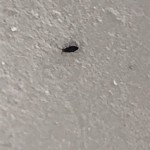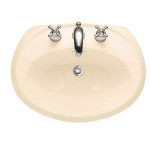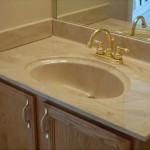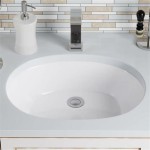How to Unclog a Clogged Bathroom Sink
A clogged bathroom sink is a common household problem that can be frustrating and inconvenient. The good news is that unclogging a sink is often a simple task that can be done with a few basic tools and supplies. This article will guide you through the steps involved in unclogging a bathroom sink effectively and safely.
1. Identify the Source of the Clog
Before attempting to unclog your bathroom sink, it's crucial to identify the source of the blockage. This will help you determine the best approach for removing it. Here are some common causes of bathroom sink clogs:
- Hair: Hair is a major culprit in bathroom sink clogs. It can easily accumulate in the drainpipe and form a tangled mess.
- Soap Scum: Soap scum, which is a buildup of soap and other residues, can also contribute to clogs, particularly if hard water is present.
- Foreign Objects: Small objects like jewelry, hair ties, or even cotton balls can get stuck in the drainpipe, causing a blockage.
- Food Debris: Although bathroom sinks aren't typically used for food preparation, small food particles can find their way down the drain, leading to clogs.
To determine the potential cause of the clog, carefully observe the sink's drainage. If the water drains slowly, it may be a minor obstruction. If the water stands still or backs up, a more significant clog is likely present.
2. Try Simple Solutions First
Before resorting to more drastic measures, there are several simple solutions you can try to unclog your bathroom sink:
- Remove visible debris: If you can see any obvious debris in the drain, use a pair of pliers or a small tool to carefully remove it.
- Pour hot water down the drain: Hot water can help to melt and loosen soap scum and other debris that may be causing the clog.
- Use baking soda and vinegar: This classic cleaning combination can be effective for breaking down clogs. Pour 1 cup of baking soda down the drain, followed by 1 cup of white vinegar. Let the mixture sit for 30 minutes, then flush with hot water.
- Use a plunger: A plunger can create suction that can dislodge clogs. Place the plunger over the drain opening, ensuring a tight seal, and pump up and down vigorously.
If any of these simple methods work, you've successfully unclogged your bathroom sink. However, if the clog persists, it's time to move on to more advanced techniques.
3. Use a Drain Snake
A drain snake is a long, flexible tool with a coiled wire at the end that’s designed to break up and remove obstructions in drainpipes. It’s a common tool for unclogging bathroom sinks and can be purchased at most hardware stores.
To use a drain snake, insert the wire into the drain opening and carefully push it into the pipe, twisting the handle to maneuver the wire. If you feel resistance, slowly work the wire back and forth to break up the clog. Once you feel the obstruction dislodge, pull the drain snake back out. Flush the drain with hot water to ensure the clog is completely removed.
While drain snakes can be very effective for unclogging sinks, it’s important to use them carefully. If you encounter significant resistance or have a deep clog, it’s best to consult a plumber to avoid potential damage to the drainpipe.
4. Consider Chemical Drain Cleaners
Chemical drain cleaners are available in liquid or gel form and are designed to dissolve hair, soap scum, and other organic materials that cause clogs. Although powerful, using chemical drain cleaners carries some risks, including:
- Damage to pipes: Some chemical drain cleaners can damage pipes, especially older ones made of plastic or metal.
- Health hazards: Chemical drain cleaners release harmful fumes that can irritate the eyes, nose, and lungs. They can also be dangerous if ingested or come in contact with skin.
Therefore, if you choose to use a chemical drain cleaner, follow the manufacturer's instructions carefully, wear protective gloves and eyewear, and ensure proper ventilation. If you are unsure about the safety of using a chemical drain cleaner in your situation, consult a plumber.
Before trying any of these methods, remember to shut off the water supply to the sink. This will prevent water from overflowing and causing further damage to the sink area. Always wear protective gloves when working with plumbing issues, and never hesitate to call in a professional plumber if you are unsure about a task or if the clog persists despite your efforts.

5 Natural Ways To Unclog A Bathroom Sink Hiller How

How To Unclog A Bathroom Sink Hana S Happy Home

How To Unclog A Slow Running Bathroom Sink Drain 10 Options

How To Unclog A Bathroom Sink

How To Unclog A Bathroom Sink With Snake
How To Unclog A Sink 4 Easy Ways

How To Unclog A Bathroom Sink The Home Depot

How To Unclog A Sink 12 Easy Ways

How To Clear A Clogged Drain Reviews By Wirecutter

How To Unclog A Bathroom Sink Quickly
Related Posts







